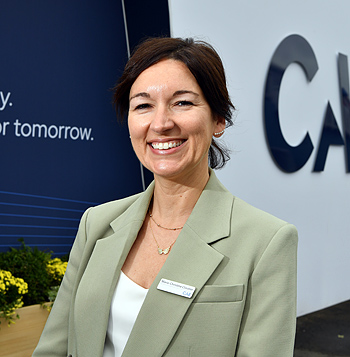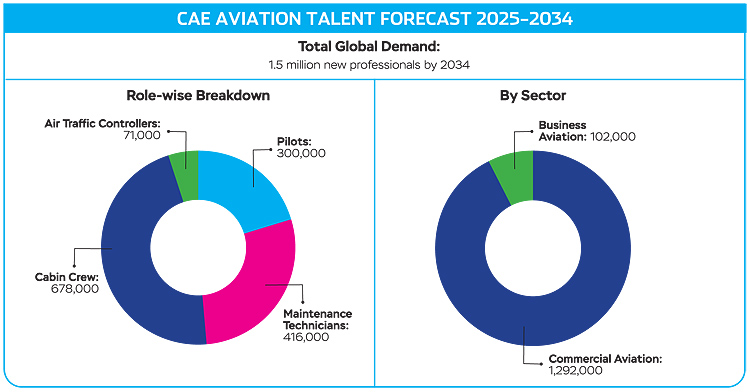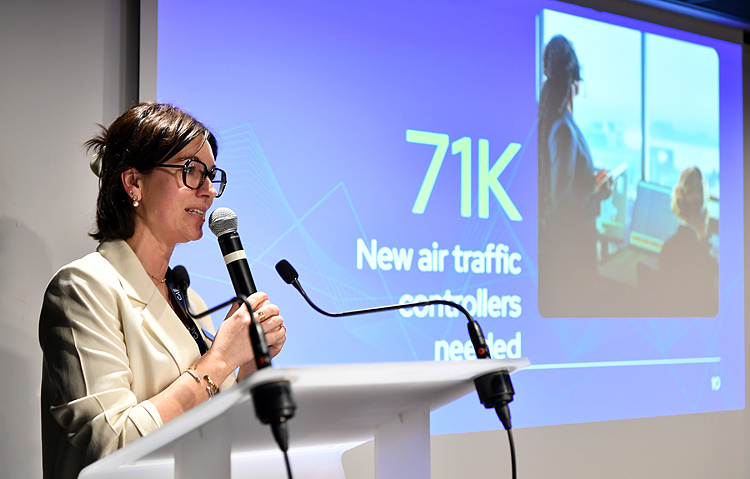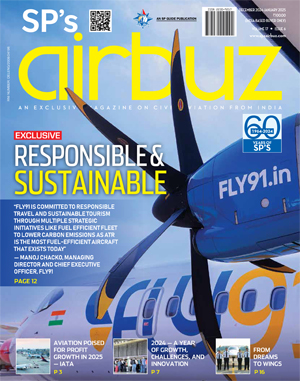“We Have to Rethink How We Train”: CAE’s Marie-Christine Cloutier on the Global Aviation Talent Crunch
An Interview with Marie-Christine Cloutier, Vice-President – Civil Strategy, Performance & Marketing, CAE

Neetu Dhulia (Dhulia): The figure of 1.5 million aviation professionals required over the next decade is striking. What are the main drivers behind such a steep demand curve?
Marie-Christine Cloutier (Cloutier): It is indeed unprecedented. What's fueling this is really two converging trends. First, we are seeing record growth in air travel globally. Depending on the market, that's anywhere between 3 per cent and 5 per cent annual growth. Second, we are also facing a wave of retirements across all categories–pilots, technicians, cabin crew, and air traffic controllers. As fleets expand and older generations exit the workforce, the scale of the need is extraordinary.
Dhulia: Could you break down the headline numbers for us? Which categories will require the most new professionals?
Cloutier: Certainly. Over the next ten years, we forecast:
- About 300,000 new pilots
- Approximately 416,000 aircraft maintenance technicians
- 678,000 cabin crew
- And 71,000 air traffic controllers, which is the first time we've included ATC in our forecast.
In total, about 1.3 million will be needed in commercial aviation, while business aviation accounts for around 102,000 of the total–33,000 pilots and 69,000 technicians.

Dhulia: How did you develop the methodology for this forecast?
Cloutier: We started with IATA's air travel projections by region and overlaid those with fleet growth and retirement patterns. That includes new deliveries and aircraft retirements. From there, we estimated the workforce required to operate and maintain those fleets, then factored in attrition and demographic shifts–like aging workforces in North America and Europe. All this combined gave us a detailed, bottom-up estimate.
Dhulia: Where geographically do you see the most acute demand?
Cloutier: Asia-Pacific will see by far the highest growth, particularly India and Southeast Asia. To illustrate, in India alone, we estimate demand for around 80,000 aviation professionals over the next decade-22,000 pilots, 44,000 cabin crew, and 16,000 technicians. North America will remain the largest market for maintenance training, while Europe will also experience steady growth due to retirements.
“We must rethink how we train. Traditional models alone won't scale fast enough.”
Dhulia: One consistent industry concern is dropout rates during training. How is CAE planning to improve throughput and success?
Cloutier: That is a critical issue. For example, in the United States alone, around 30 per cent of air traffic control students do not complete their training, even after being hired. To address this, we believe training must be far more engaging, accessible, and adaptive.
We have invested heavily in new approaches–like our partnership with Apple, developing an immersive training app for Apple Vision Pro. Trainees can reinforce lessons at home in mixed reality. Another example is CAE Rise, our data-driven training platform. It measures performance in detail, tracking how pilots or trainees process scenarios. This lets instructors personalize training to improve success rates.
Dhulia: Could you share how technologies like eye-tracking are transforming training?
Cloutier: Certainly. We are evaluating the feasibility of incorporating eye-tracking technology to assess where a pilot or air traffic controller is looking during a scenario. For instance, a trainee may successfully complete a maneuver, but their gaze patterns reveal they didn't check the correct instruments or displays. That tells us they succeeded by intuition or chance rather than true understanding.
“Simulation itself is inherently sustainable. Every hour in a simulator is an hour not burning fuel.”
This data allows instructors to target knowledge gaps with precision. In the future, we expect to integrate additional biometrics–like heart rate or stress response—and potentially psychometrics as well.
Dhulia: To what extent is training adapted by country or region?
Cloutier: The regulatory curriculum itself is determined by authorities like the FAA, Transport Canada, or EASA, and by individual airlines. So the fundamental standards are globally consistent. However, the delivery is localized. We employ regional instructors who understand cultural nuances and language, and we adapt the way material is presented to engage students more effectively.
Overall, while the core methodology is similar, local context and instructor experience make a significant difference.
Dhulia: Simulation is not just about skill–it's also about sustainability. How does CAE see simulation contributing to decarbonization?
Cloutier: Simulation is inherently sustainable because every hour spent in a simulator is an hour not consuming jet fuel. Beyond that, our scenario-based training includes fuel efficiency techniques–like optimized climb and descent profiles and single-engine taxi procedures.
“India is an inspiring exception–women there make up a far higher share of pilots than anywhere else.”
As electric and hybrid aircraft enter fleets, we are already adapting training to cover those specific systems and operational considerations.
India Snapshot (2025–2034):
Total Demand: ~80,000 aviation professionals
- Pilots: 22,000
- Cabin Crew: 44,000
- Maintenance Technicians: 16,000
India leads globally in percentage of women pilots–well above the 5 per cent global average.
Dhulia: You mentioned earlier that diversity is a major priority. What specific steps are you taking to improve representation, especially for women?
Cloutier: Globally, only about 5 per cent of pilots are women, though India is an inspiring exception with much higher participation. Our Women in Flight initiative is designed to address this imbalance. We partner with airlines such as easyJet and Air Canada to provide financial support, mentorship, and structured pathways for women to enter the profession.
Dhulia: Air traffic control training is a newer area for CAE. How has that evolved?
Cloutier: Over the past year, we have significantly expanded into ATC training. For example, we have a partnership with NAV Canada. Students are recruited and employed by NAV Canada and complete five months of initial training at our centers before moving on to on-the-job training.

We demonstrated our latest technologies, including eye-tracking, at Airspace World. Right now, we are in discussions with several countries to broaden our ATC training footprint further.
Dhulia: From a global perspective, how extensive is CAE's current training infrastructure?
Cloutier: We operate in about 40 countries, with approximately 250 sites worldwide. This includes 60 civil aviation training centers. When you combine our civil and defense operations, our global footprint encompasses more than 240 locations. That scale allows us to support regulators and operators everywhere.
Dhulia: What is the single most important message you would like the industry to take away from this forecast?
Cloutier: The scale of the challenge means we must fundamentally rethink how we train. Traditional methods alone will not be enough to meet this demand. We have to embrace technology, data, and new learning models. Only then can we scale up capacity, improve outcomes, and attract the diverse, skilled workforce our industry needs to thrive.
As the aviation sector accelerates into a decade of historic growth, Cloutier's perspective is clear: the future of air travel will rely not just on aircraft technology, but on the innovation, adaptability, and diversity of the people trained to keep the skies safe.





